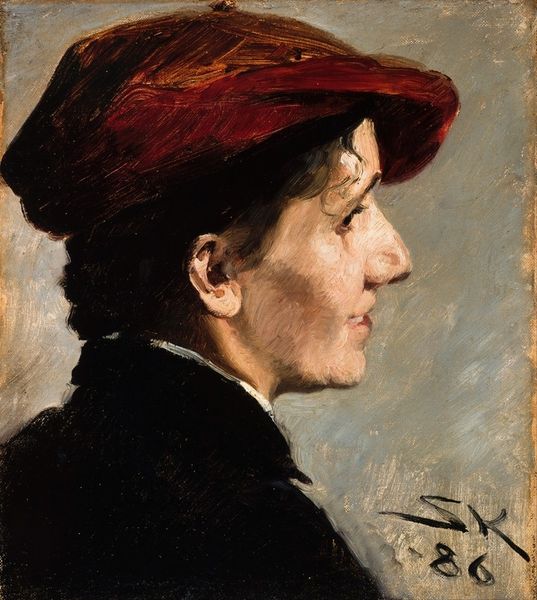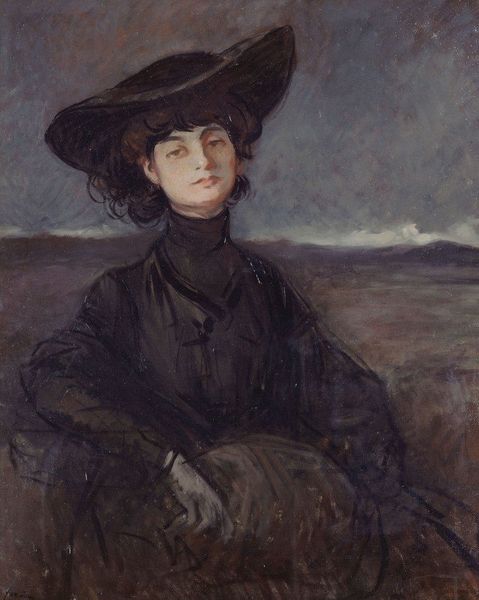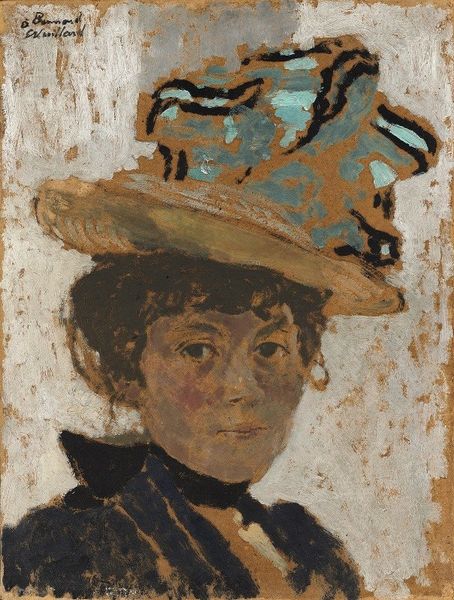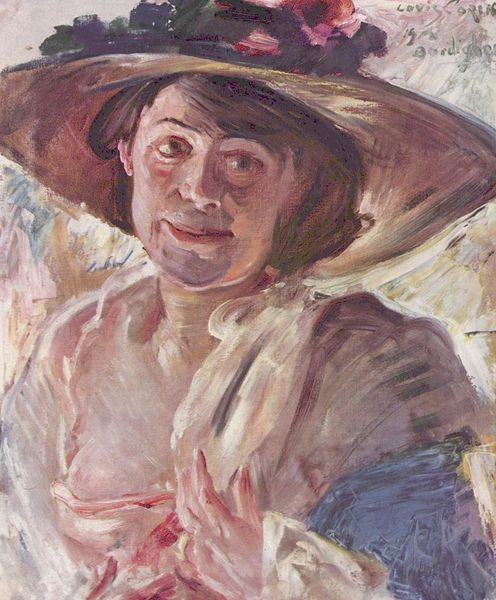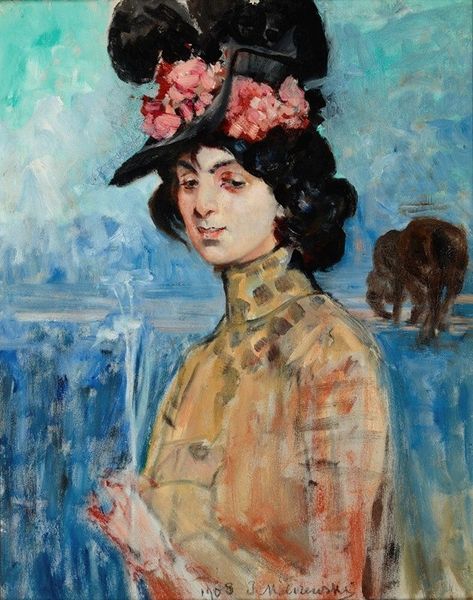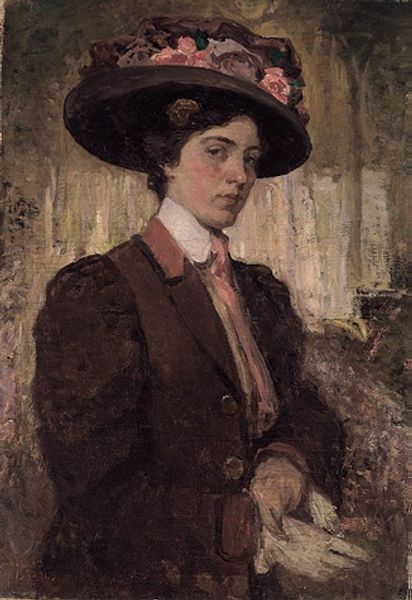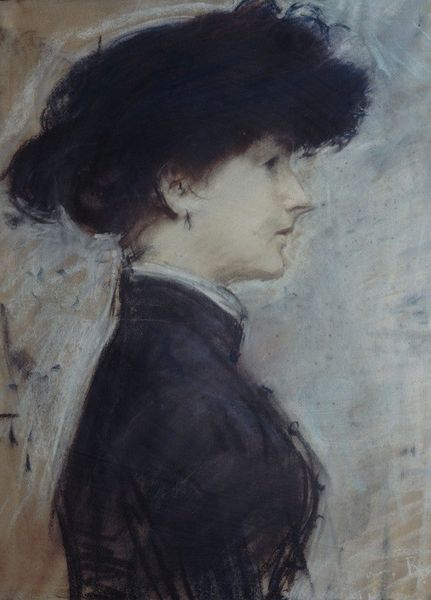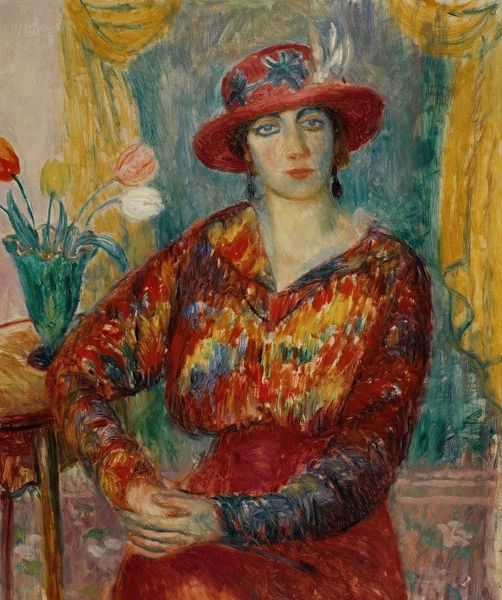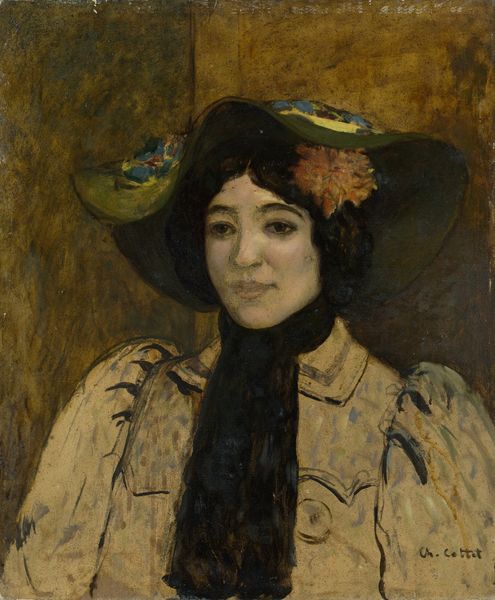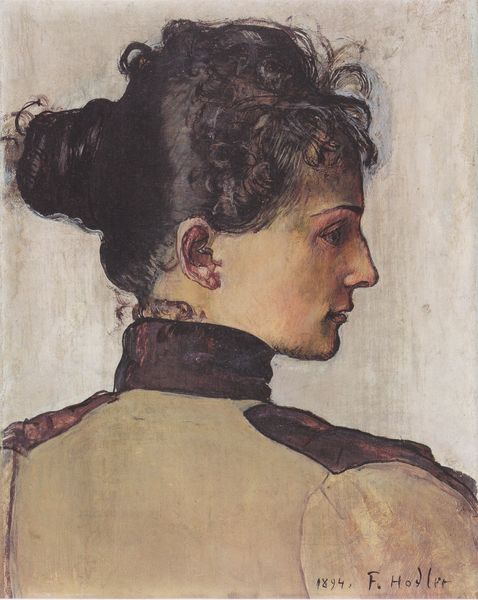
Copyright: Public domain
Editor: Here we have Gerda Wegener’s “Lady in a Large Hat” from 1909, rendered in oil paint. It's a pretty standard portrait, but something about the details of her clothing and the directness of her gaze catches my eye. What do you make of it? Curator: Well, let’s think about the labor involved in creating this image. Wegener is using oil paints, commercially produced – a product of industrial chemistry. What kind of social narratives can we unlock through them? How do they compare to the hand-ground pigments of earlier periods? Editor: So you're thinking about the industrial aspect? Curator: Precisely. The availability of pre-mixed paints dramatically altered the painter's process. And look at the depiction of fabric, like the fur stole. The access to such items, speaks volumes about the sitter’s social class and their consumer habits. Editor: So, beyond just being aesthetically pleasing, these details tell a story about access and societal structure? The sitter wearing the items, Wegener getting the raw materials - what would it all say? Curator: Exactly! And let's think about the labour *of* the sitter. Who might she be? Wegener, known for her portraits, frequently painted her partner, Lili Elbe. What is performance and production here? Editor: That connection to Elbe makes me rethink everything; Lili's own identity was in a constant state of negotiation. So the painting itself becomes part of that performance? Curator: It blurs the lines. Art, and the items and raw materials in it become tools in social life and shaping self-perception. It's about investigating the confluence of material production and self-production. What does an artwork produce outside its own boundaries? Editor: That is really eye-opening; thinking about the means of material production is definitely a great way to ground ourselves when analyzing artworks.
Comments
No comments
Be the first to comment and join the conversation on the ultimate creative platform.

